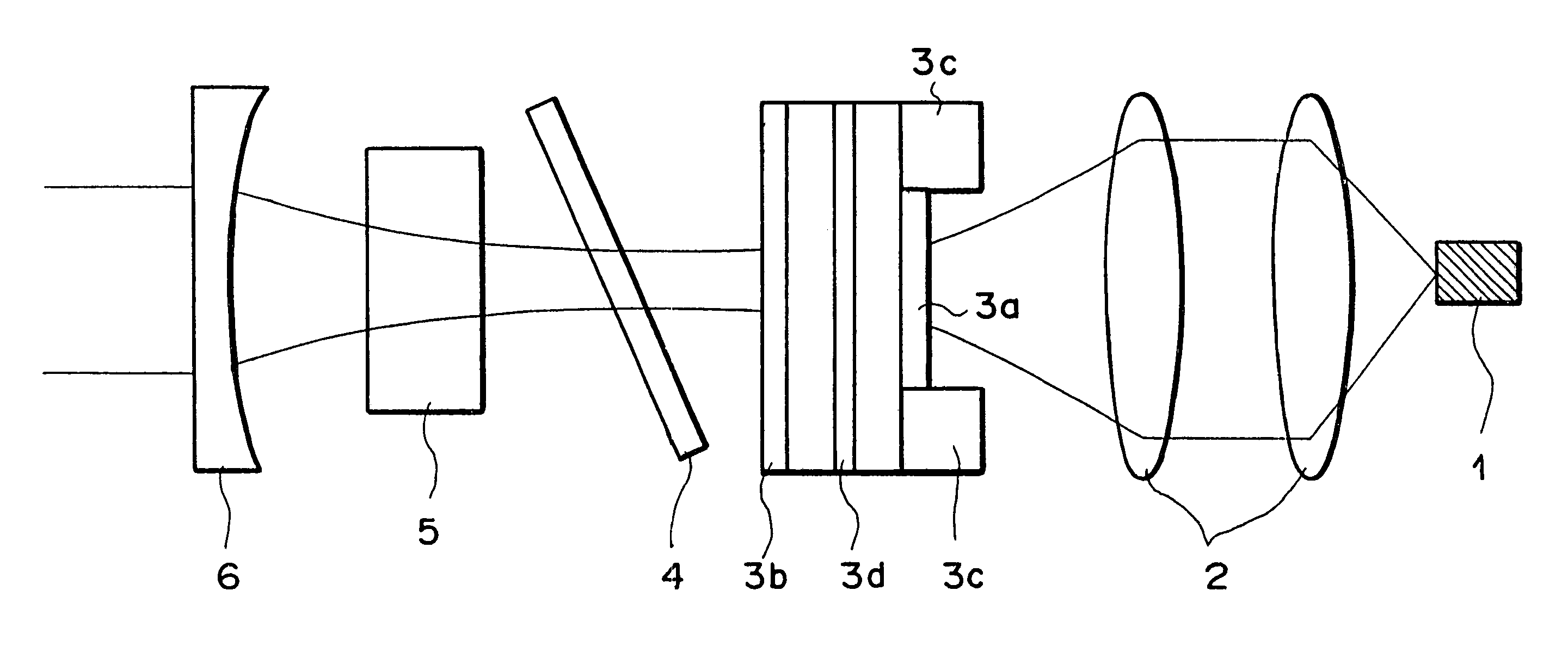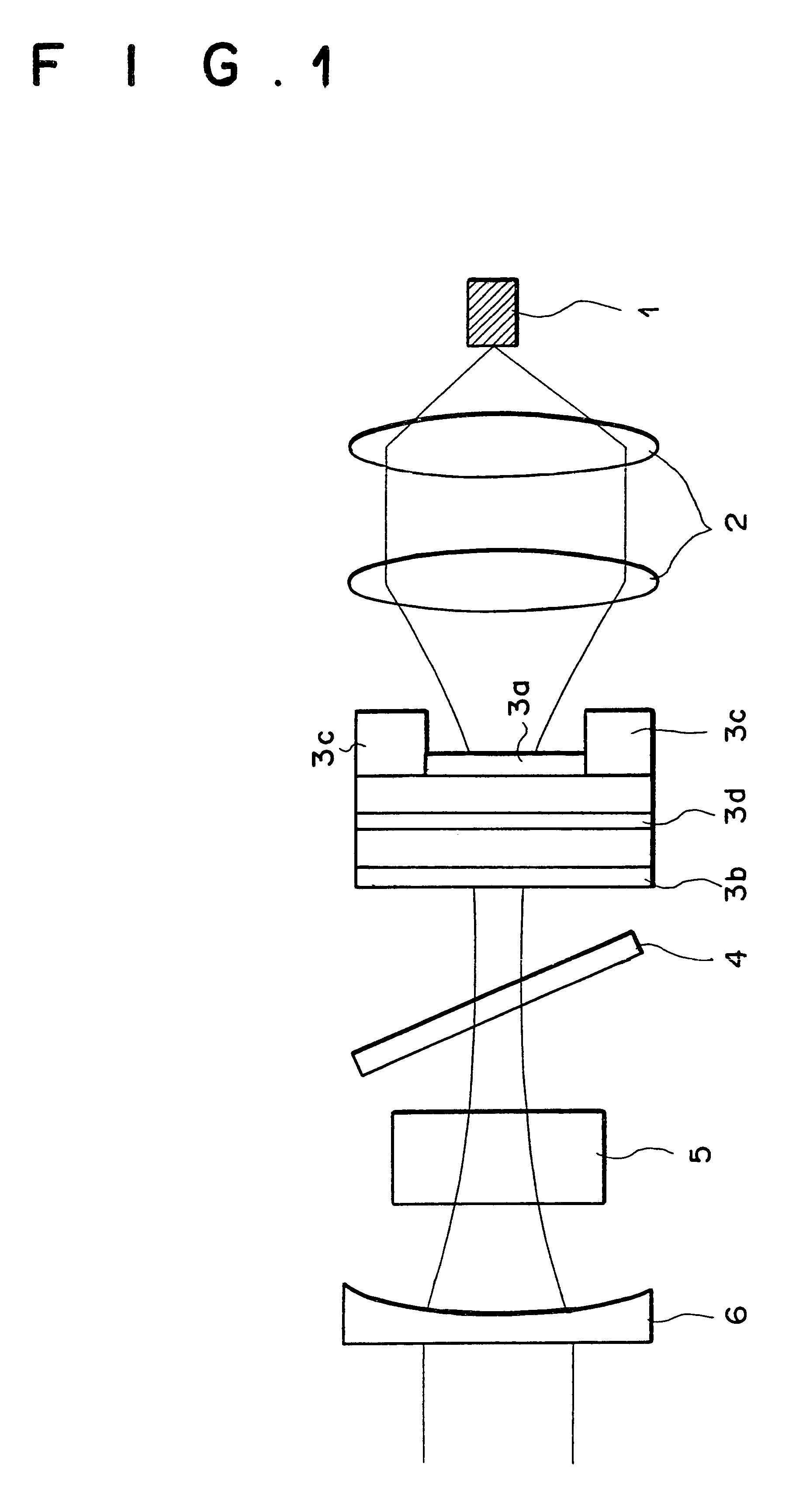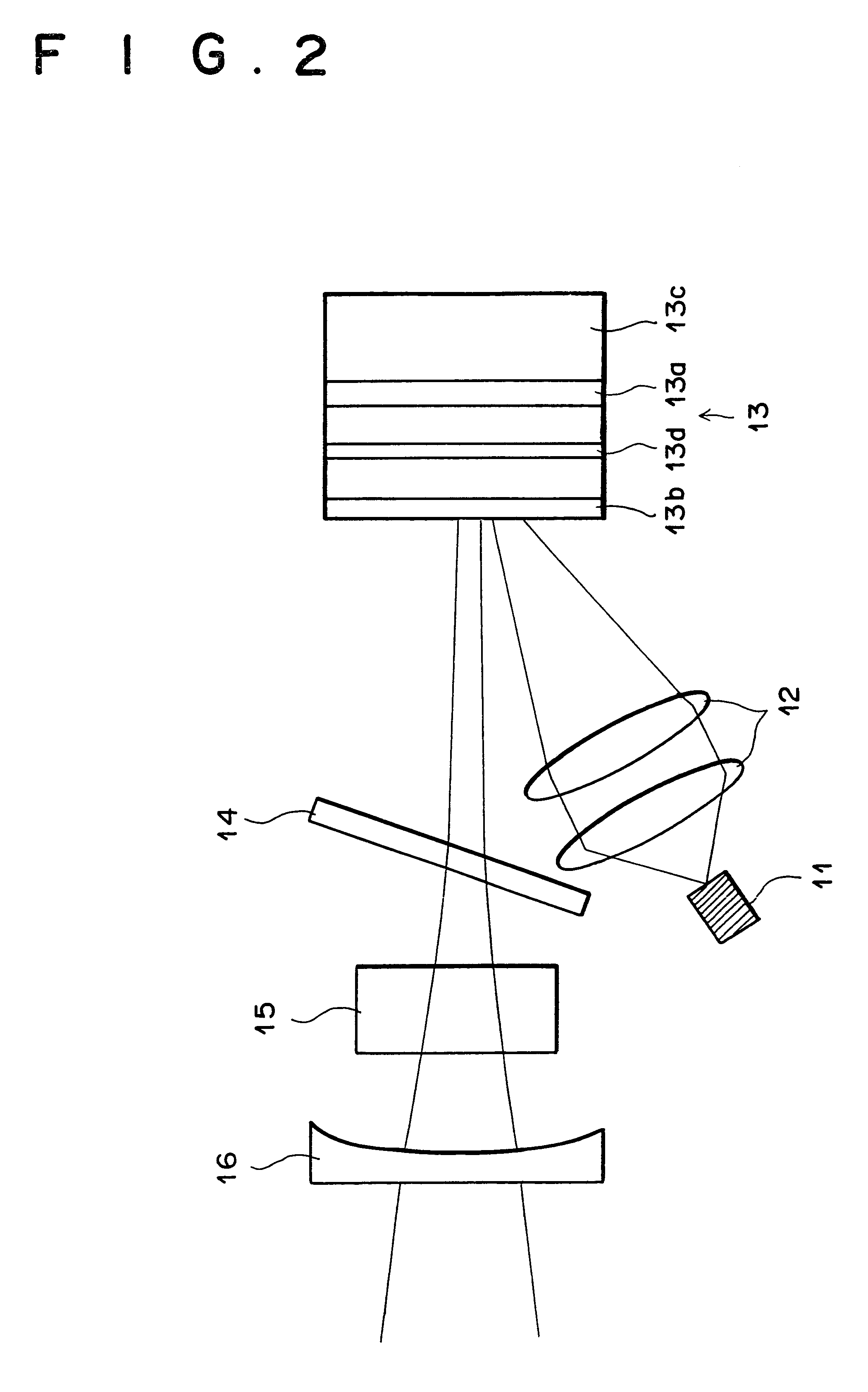Wavelength conversion apparatus using semiconductor optical amplifying element for laser oscillation
a technology of optical amplifier and wavelength conversion, which is applied in the direction of optical resonator shape and construction, semiconductor laser, instruments, etc., can solve the problems of mode hopping, light output power fluctuation, and unignorable nois
- Summary
- Abstract
- Description
- Claims
- Application Information
AI Technical Summary
Problems solved by technology
Method used
Image
Examples
first embodiment
FIG. 1 is a diagram illustrating the construction of the wavelength conversion apparatus as the first embodiment of the present invention. In the construction of FIG. 1, excitation laser light is supplied to the back end surface of the semiconductor optical amplifying element.
As illustrated in FIG. 1, the excitation laser light emitted by the semiconductor laser device 1 (as an excitation light source) is collected and converged by the lens system 2, and enters the active layer 3d of the semiconductor optical amplifying element 3 from the back end surface in the direction perpendicular to the substrate 3c thereof. Excited by the excitation laser light, the semiconductor optical amplifying element 3 emits laser light. The laser light emitted by the semiconductor optical amplifying element 3 passes through the birefringent filter 4 and the wavelength conversion element 5, and reaches the concave mirror 6. The birefringent filter 4 is provided for controlling the longitudinal mode of t...
second embodiment
FIG. 2 is a diagram illustrating the construction of the wavelength conversion apparatus as the second embodiment of the present invention. In the construction of FIG. 2, excitation laser light enters the semiconductor optical amplifying element from a surface through which laser light generated by the semiconductor optical amplifying element exits from the semiconductor optical amplifying element.
As illustrated in FIG. 2, the excitation laser light emitted by the semiconductor laser device 11 (as an excitation light source) is collected and converged by the lens system 12, and enters the active layer 13d of the semiconductor optical amplifying element 13 through the periodic-structure dielectric film 13b, where the incident angle of the excitation laser light on the periodic-structure dielectric film 13b is exactly or nearly the Brewster's angle, i.e., the excitation laser light entering the semiconductor optical amplifying element 13 is substantially p-polarized light. When the in...
third embodiment
FIG. 3 is a diagram illustrating the construction of the wavelength conversion apparatus as the third embodiment of the present invention. In the construction of FIG. 3, excitation laser light from the semiconductor laser device is supplied through a beam splitter to the semiconductor optical amplifying element. The excitation laser light enters the semiconductor optical amplifying element from a surface through which laser light generated by the semiconductor optical amplifying element exits from the semiconductor optical amplifying element.
As illustrated in FIG. 3, the excitation laser light emitted by the semiconductor laser device 21 (as an excitation light source) is collected and converged by the lens system 22, is reflected by the beam splitter 27, and enters the active layer 23d of the semiconductor optical amplifying element 23 through the wavelength conversion element 25 and the periodic-structure dielectric film 23b in the direction perpendicular to the substrate 23c of t...
PUM
| Property | Measurement | Unit |
|---|---|---|
| stripe width | aaaaa | aaaaa |
| reflectance | aaaaa | aaaaa |
| reflectance | aaaaa | aaaaa |
Abstract
Description
Claims
Application Information
 Login to view more
Login to view more - R&D Engineer
- R&D Manager
- IP Professional
- Industry Leading Data Capabilities
- Powerful AI technology
- Patent DNA Extraction
Browse by: Latest US Patents, China's latest patents, Technical Efficacy Thesaurus, Application Domain, Technology Topic.
© 2024 PatSnap. All rights reserved.Legal|Privacy policy|Modern Slavery Act Transparency Statement|Sitemap



